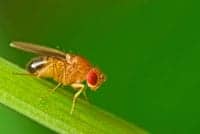
The team hypothesized that if they could break the genes responsible for axon destruction, then the axons should not fall apart. In an effort to spotlight these genes, researchers explain they performed a screen, randomly breaking genes in the fly genome and searching for those that when broken blocked axon destruction following injury. The research resulted in the identification of the dSarm gene. Freedom notes that the researchers, “got beautiful protection of axons when we knocked out this molecule.” The release notes that researchers then crossed the mouse version of the Sarm mutation into a mouse model that has a type of familial ALS, also seen in humans.
While the results indicate that the mice still lost weight and had difficulty with a mobility test, they survived 10 days longer than their counterparts without the Sarm mutation, and at least half of the mice’s motor neurons remained intact. “Since not all the motor neurons are needed, even with 50% reduction a patient could feel very close to normal. It would be life-changing for the patient, so it’s a step in the right direction,” Freeman says.
Source: Genetics Society of America





